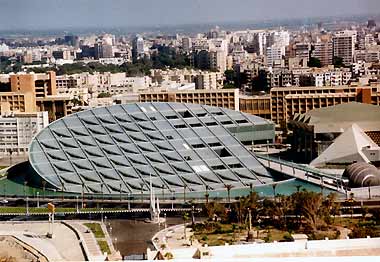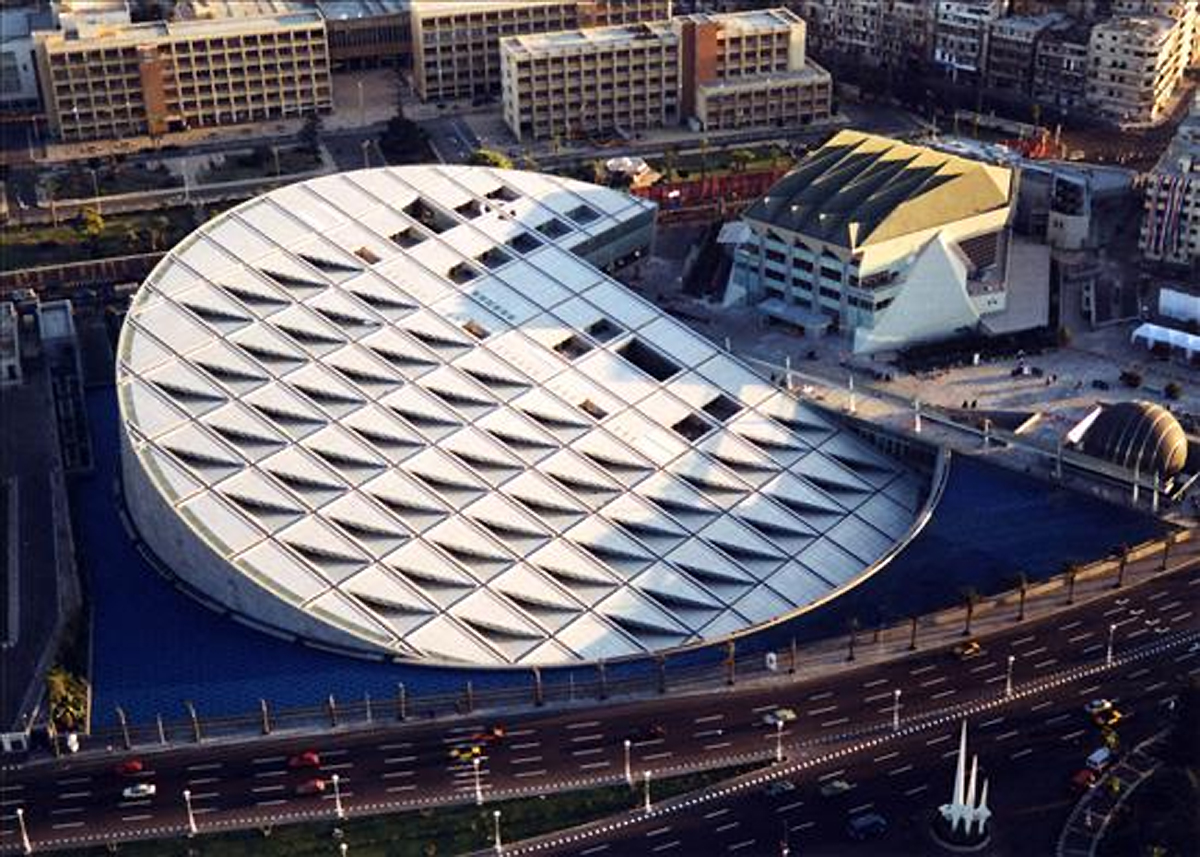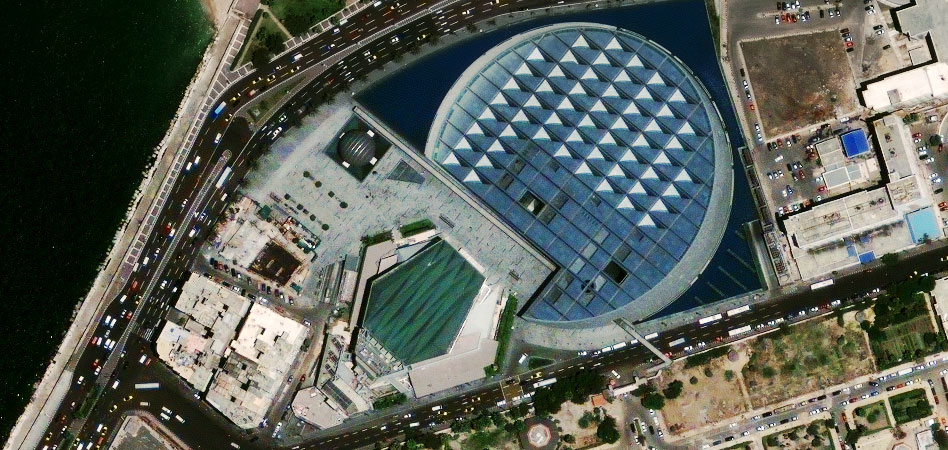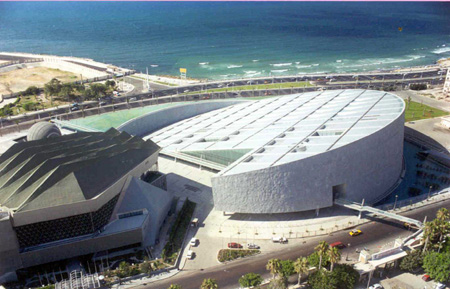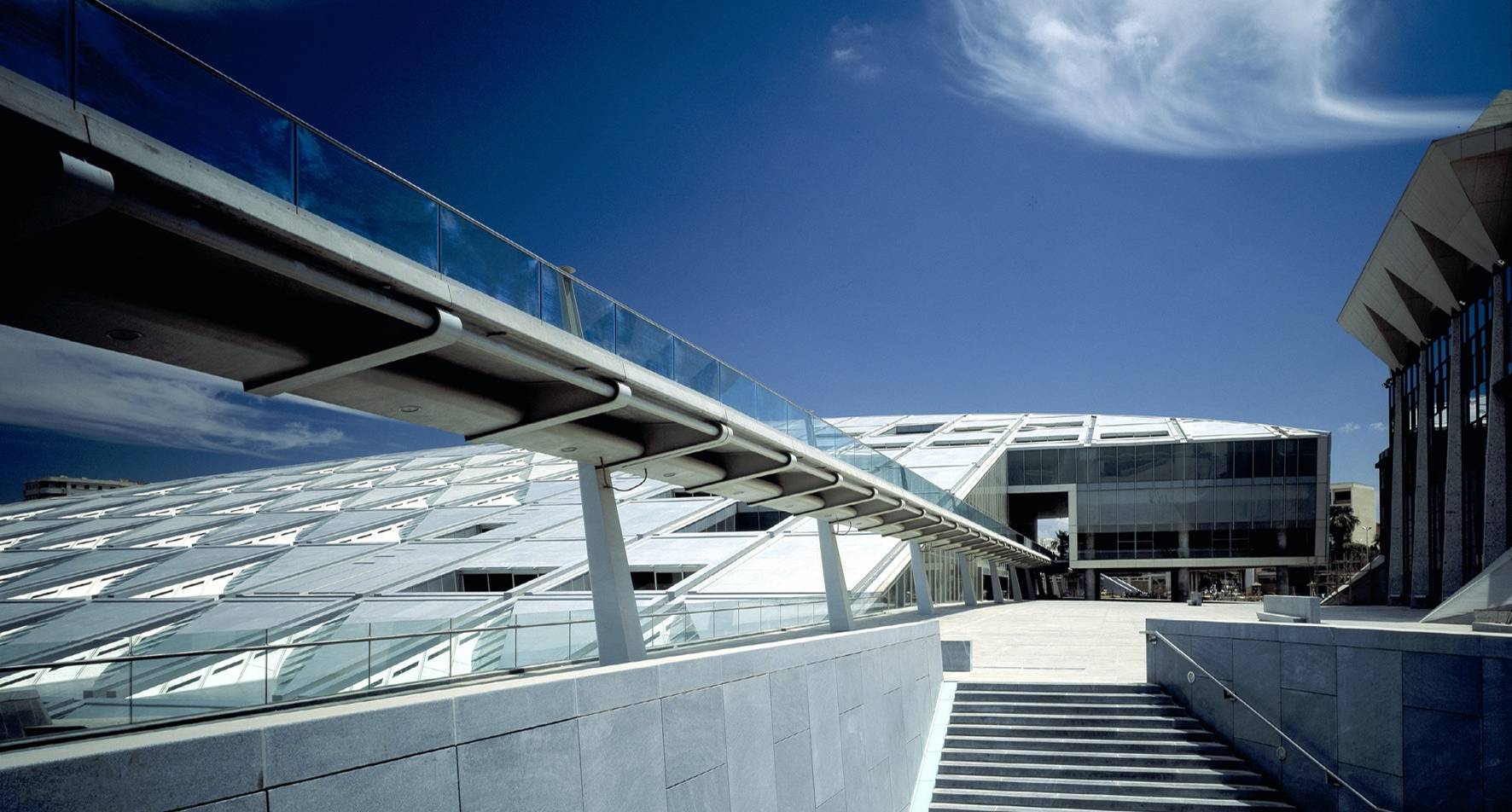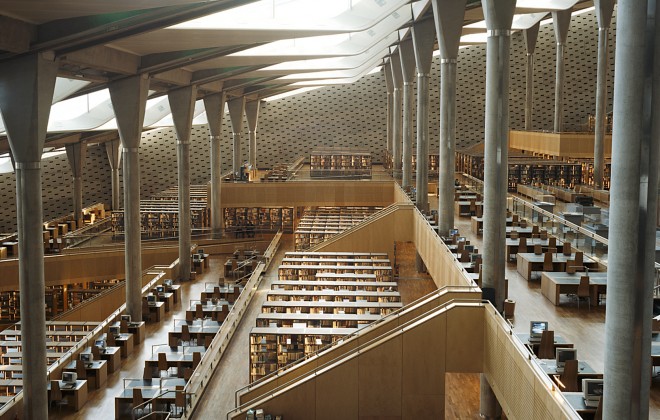The Bibliotheca Alexandrina (English: Library of Alexandria; Arabic: مكتبة الإسكندرية Maktabat al-Iskandarīyah, Egyptian Arabic: [mækˈtæb(e)t eskendeˈɾejjæ]) is a major library and cultural center located on the shore of the Mediterranean Sea in the Egyptian city of Alexandria. It is both a commemoration of the Library of Alexandria that was lost in antiquity, and an attempt to rekindle something of the brilliance that this earlier center of study and erudition represented.
The idea of reviving the old library dates back to 1974, when a committee set up by Alexandria University selected a plot of land for its new library, between the campus and the seafront, close to where the ancient library once stood. The notion of recreating the ancient library was soon enthusiastically adopted by other individuals and agencies. One leading supporter of the project was former Egyptian President Hosni Mubarak; UNESCO was also quick to embrace the concept of endowing the Mediterranean region with a center of cultural and scientific excellence. An architectural design competition, organized by UNESCO in 1988 to choose a design worthy of the site and its heritage, was won by Snøhetta, a Norwegian architectural office, from among more than 1,400 entries. At a conference held in 1990 in Aswan, the first pledges of funding for the project were made: USD $65 million, mostly from the Arab states. Construction work began in 1995 and, after some USD $220 million had been spent, the complex was officially inaugurated on 16 October 2002.
The Bibliotheca Alexandrina is trilingual, containing books in Arabic, English, and French. In 2010, the library received a donation of 500,000 books from the National Library of France, Bibliothèque nationale de France (BnF). The gift makes the Bibliotheca Alexandrina the sixth-largest Francophone library in the world. The BA also is now the largest depository of French books in the Arab world, surpassing those of Tunisia, Algeria and Morocco, in addition to being the main French library in Africa.
The dimensions of the project are vast: the library has shelf space for eight million books, with the main reading room covering 70,000 square metres (750,000 sq ft) on eleven cascading levels. The complex also houses a conference center; specialized libraries for maps, multimedia, the blind and visually impaired, young people, and for children; four museums; four art galleries for temporary exhibitions; 15 permanent exhibitions; a planetarium; and a manuscript restoration laboratory. The library's architecture is equally striking. The main reading room stands beneath a 32-meter-high glass-panelled roof, tilted out toward the sea like a sundial, and measuring some 160 m in diameter. The walls are of gray Aswan granite, carved with characters from 120 different human scripts.
The collections at the Bibliotheca Alexandrina were donated from all over the world. The Spanish donated documents that detailed their period of Moorish rule. The French also donated, giving the library documents dealing with the building of the Suez Canal.
The BA/IA partnership is built with the aims to preserve heritage for future generations and to provide universal access to human knowledge. The BA maintains the only mirror and external backup of the Internet Archive. The Internet Archive donated five million USD to the BA, including:
10 billion web pages spanning the years 1996–2001 from over 16 million different sites
2000 hours of Egyptian and U.S. television broadcast
1000 archival films
100 terabytes of data stored on 200 computers
A books-scanning facility for local books.




